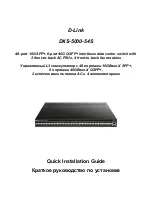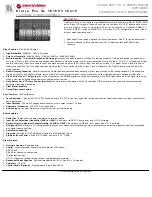
The system view is displayed.
2.
Run:
interface
interface-type
interface-number
The interface view is displayed.
3.
Run:
traffic-policy
policy-name
{
inbound
|
outbound
}
A traffic policy is applied to the interface in the inbound or outbound direction.
Only one traffic policy can be applied to an interface in the inbound or outbound
direction.
After a traffic policy is applied, the system performs traffic policing for the packets
that pass through this interface and match a traffic classifier in the inbound or outbound
direction.
l
Applying a traffic policy to a VLAN
1.
Run:
system-view
The system view is displayed.
2.
Run:
vlan
vlan-id
The VLAN view is displayed.
3.
Run:
traffic-policy
policy-name
{
inbound
|
outbound
}
A traffic policy is applied to the VLAN in the inbound or outbound direction.
Only one traffic policy can be applied to a VLAN in the inbound or outbound direction.
After a traffic policy is applied, the system performs traffic policing for the packets
that belong to a VLAN and match a traffic classifier in the inbound or outbound
direction.
----End
2.3.6 Checking the Configuration
After traffic policing based on a traffic classifier is configured, you can view the traffic statistics
or CAR statistics.
Context
The configurations of traffic policing based on a traffic classifier are complete.
Procedure
l
Run the
display traffic behavior
user-defined
[
behavior-name
] command to check the
traffic behavior configuration.
l
Run the
display traffic classifier
user-defined
[
classifier-name
] command to check the
traffic classifier configuration.
S3700HI Ethernet Switches
Configuration Guide - QoS
2 Traffic Policing and Traffic Shaping Configuration
Issue 01 (2012-03-15)
Huawei Proprietary and Confidential
Copyright © Huawei Technologies Co., Ltd.
62
















































